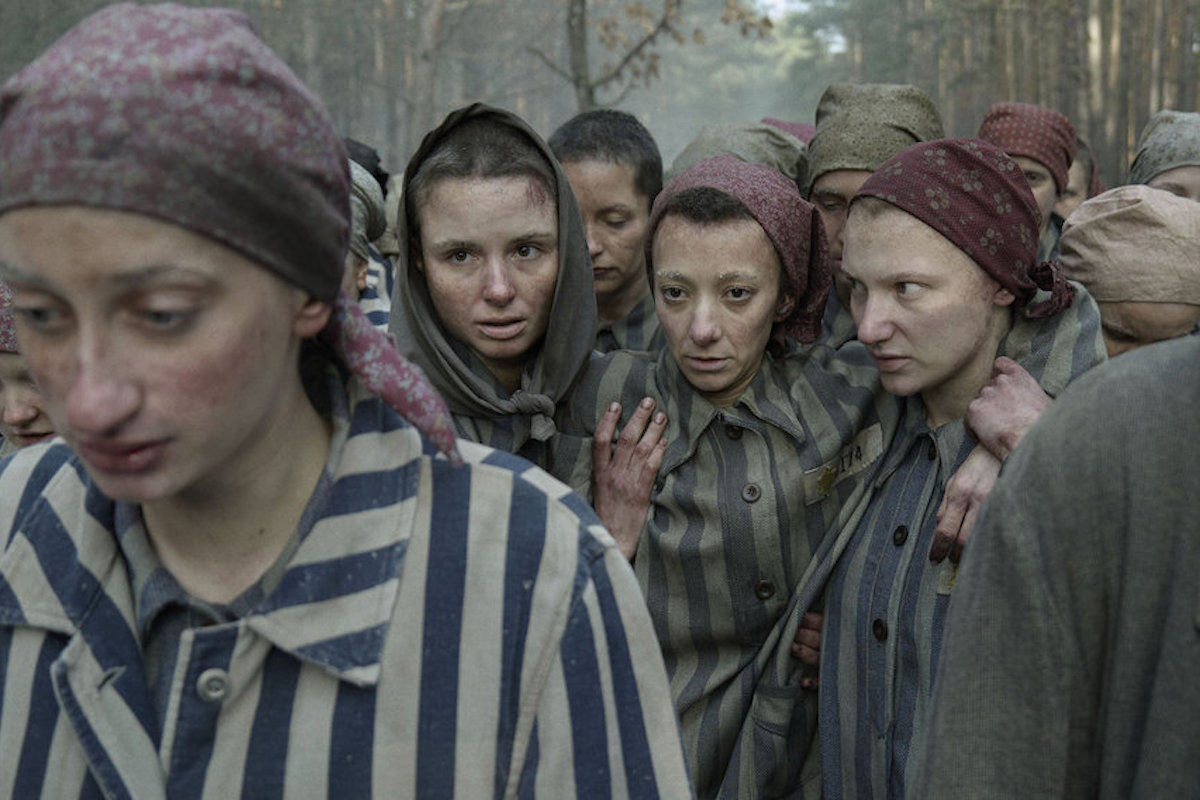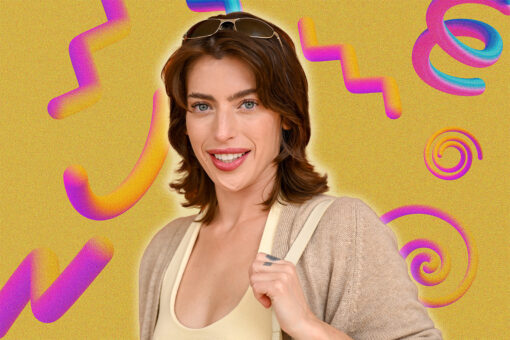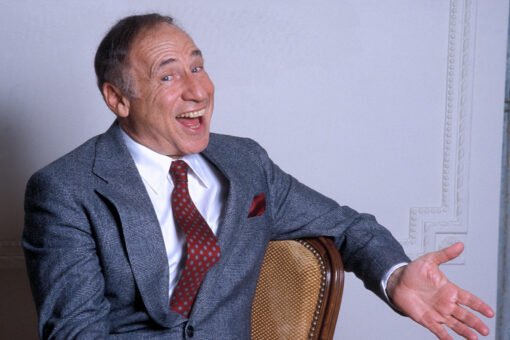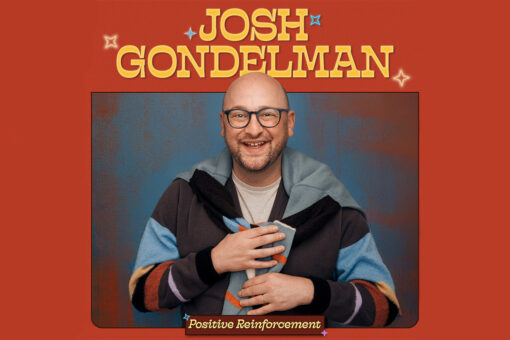Tallulah Haddon took a lot of photos while shooting “The Tattooist of Auschwitz” — photos of castmates and a Passover seder that took place on a set replicating the notorious Nazi concentration and extermination camp. But mostly, the 28-year-old queer Jewish actor and multidisciplinary artist took photos of themself.
In a couple, Tallulah stares down the camera, donning the infamous striped concentration camp uniform and a white beanie revealing only a glimpse of their shaved head. Another shot shows just their shoes against the mud-soaked ground. Yet another depicts Tallulah’s legs in a shower, dirt-like makeup caking their feet and covering them to above their knees. All of it is quite a distance from previous roles Tallulah has played, like in Netflix’s “Kiss Me First,” “Black Mirror: Bandersnatch” and Ridley Scott’s film “The Last Duel.”
“The Tattooist of Auschwitz,” adapted into a miniseries from the book of the same name, focuses on an elderly Holocaust survivor named Lali Sokolov (Harvey Keital and Jonah Hauer-King share the role) as he recalls his experience at Auschwitz to the woman writing his memoir. The crux of the narrative shows Lali meeting a young woman named Gita (Anna Próchniak) after being forced to tattoo her, the pair falling in love, surviving Auschwitz together and reuniting after the Holocaust.
In the show, Tallulah plays Hanna, a fellow Jewish inmate and friend of Gita’s. In moments when Lali and Gita are separated at the camp (which is most of them), Hanna and another inmate Ivana (Mili Eshet, sister of actress Maya Eshet) ground Gita. They protect and heal her when she’s sick from an infected cut. Together the trio helps a pregnant inmate secretly deliver a baby in the barracks. And later, Gita and Hanna escape a death march, hand-in-hand.
“The Tattooist of Auschwitz” is a harrowing show and a harrowing experience for anyone to be a part of, let alone a Jewish actor and artist like Tallulah. So, unsurprisingly, it’s one that has clearly affected their own art — which spans photography, film, drag and non-drag performance. In addition to the self-portraits, Tallulah recently made their directorial debut in “I’m Asking You to Eat It,” which served as their thesis for their MFA program at Bard College. The short film explores Jewish Holocaust trauma, kink and cannibalism.
But Jewishness is also a common thread in Tallulah’s art. In 2019, Tallulah portrayed biblical Jewish hero Judith in a re-enactment of the painting “Judith slaying Holofernes” by Artemisia Gentileschi for a shoot devised with photographer Natalie Lennard. A 2023 performance called “Score 1: Butter” from an installation with sound artist Alina Maldonado was inspired by the story of a prisoner at Auschwitz who used rationed butter to make a candle for Hanukkah. And in a future short film Tallulah hopes to make called “Dual,” which has been in the works since before they shot “Tattooist,” Jewishness will play a role in imagined queer duels in medieval England.

Tallulah chatted with Hey Alma via Zoom about their experience filming “The Tattooist of Auschwitz,” making queer Jewish art and more.
This interview has been lightly edited and condensed for clarity.
First, could you tell me a bit about your Jewish identity and upbringing?
I grew up in a culturally Jewish household. Ritual was introduced young and I have many memories of Passover dinners, my sinuses aching from eating maror, and the salty water, the shed tears. I say Passover as it’s my favorite festival. I love the symbolism and the magical thinking, each element of the seder carrying a playful yet weighted symbolism.
The Jewish home is the site of many important rituals, including the bris and Friday night dinners — womxn and mothers taking a central part. I feel that lineage of matriarchy. I led my sister’s alternative bat mitzvah ceremony, which included rituals we had created together that were specific and important to us as queer siblings. At one point we created an arc of six tallits, all held by family and friends, which she walked under. The family and friends were asked to hold the tallits and whisper blessings into them beforehand. The whole ceremony was really significant for us to create our own space and esoterism within an ancient Jewish ritual.

That’s beautiful, thank you for sharing that. Why did you take the self-portraits and make your film “I’m Asking You to Eat It”?
So I made the film at the same time as filming [“The Tattooist of Auschwitz”], and it felt like all of my subconscious feelings about being a Jewish actor in that specific show were then channeled into it. Same with the self-portraits. It’s me trying to see myself in something that was so huge and kind of mundane, but also incredibly profound. I actually didn’t want to take the job because I was like, you can’t pay me to go to Auschwitz. Fuck that. And then they told me how much they were going to pay me. And I was like, “Well, turns out you can. Actually, yeah, I’m going. Off I go!” So I guess I just felt very conflicted about the whole thing. It kind of almost felt sick, in a way.
I definitely got that sense in the short film in the scene where your character is performing as a concentration camp prisoner and the director’s like, “Could you do more? Could you be more scared?” Essentially asking your character to perform Jewish trauma more. Was that true to your experience filming?
I had a really good experience with the director of “The Tattooist of Auschwitz.” [Tali Shalom Ezer] is incredibly talented. And I was kind of having a queer baby moment where I was like, “You’re queer and Jewish and a woman… Wait, I’ve never worked with all three of those identities in the same person.” But then I definitely felt very strange about making entertainment about [the Holocaust]. Because that’s our job [as actors]. It is entertainment at the end of the day. It’s education at the same time, but there’s so little that you know about how something’s going to be edited when you’re an actor.
It was a wild experience. My friend Isaac, who was in the show, and whose grandpa was in Auschwitz, was having a lot of deja vu. He kept seeing things and he thought that he had seen them previously. He was having a somatic, bodily experience being on set.
But yeah, that’s my perspective. And that’s something that I want to draw out more in my directing, the experience of the actor in a really, really specific place, experiencing emotional manipulation that you’re asked to do as an actor, sometimes being manipulated by a director or project, but also letting yourself and pulling things forward and pushing things back, all these minute emotions… That was a big part of my thesis and “I’m Asking You to Eat It.” What does it mean to reenact something?
And what does it mean spiritually, as well? To be honest, I know it sounds cheesy, but there were moments where I really felt like there were people in the room with us. And I would be like, “Hi, you alright? Thanks for being here.”
It’s such a responsibility to have to tell someone’s life story and recreate history. And you were working almost entirely on a set made to look like Auschwitz, right?
Yeah, it felt like we were really there. It was so realistic and it was really creepy. Actually, I kind of want to go back to the real Auschwitz. I went to Auschwitz when I was at school, but I just wasn’t really old enough to… it was too much. I was flirting with some person because we’re on a school trip, and I was the only Jewish person, and I don’t think people even knew I was Jewish because it’s different being Jewish in Britain. So I just remember not being able to deal with what it meant. It would be interesting to go back, and maybe it would be creepy because I’d be like, “Oh God, I’ve spent so much time here.”
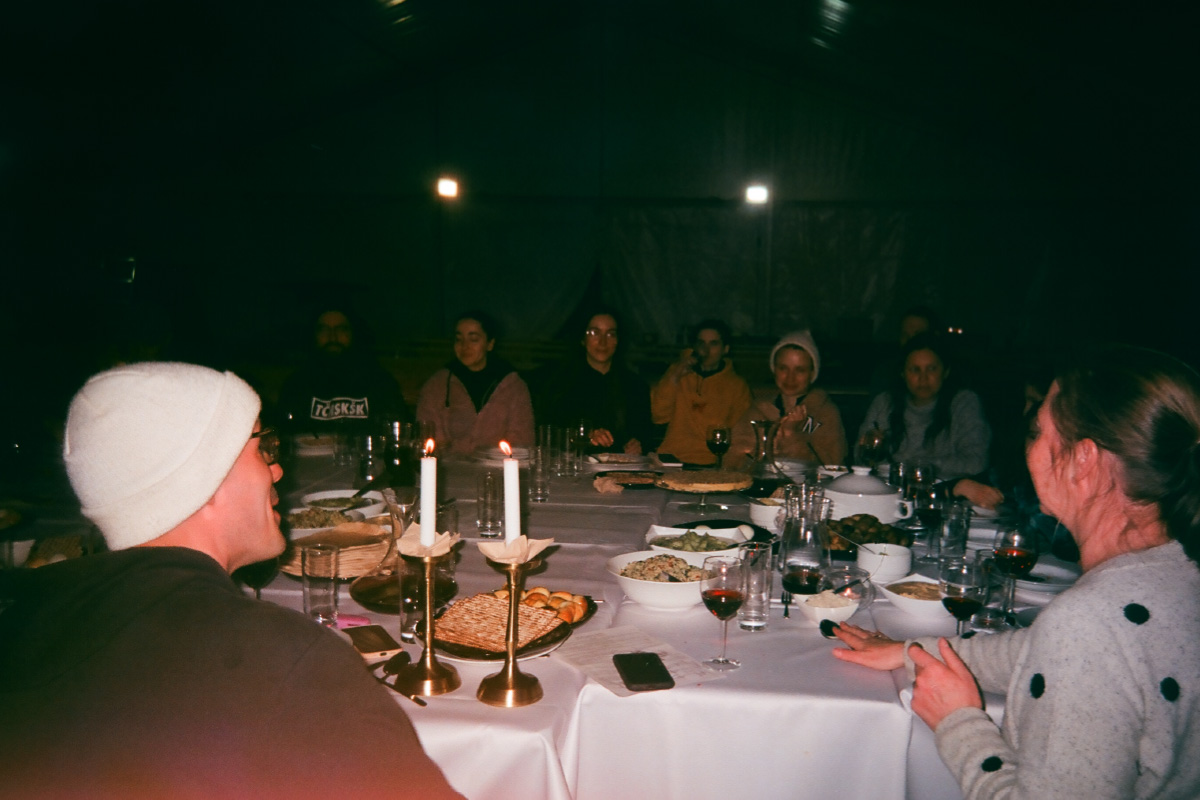
Executive Producer Claire Mundell said in a recent panel for the show that there was a Passover seder that happened on set. Could you tell me a bit about that?
It happened in the catering area on set. It was definitely not like the Passover that I do at my family house. It was very different. But also, what I like about Jewish festivals is that you can do them really DIY. So yeah, the weirdest thing was we got there, and I was with my girlfriend because she was visiting from Mexico, and no one was leading it. So I basically decided to lead it with Jonah [Hauer-King]. Which was kind of nerve-wracking because I felt like it needed to be really perfect, but it was also just like, I don’t know, the ritual was that everyone was there and it didn’t really matter what we did. The important part was that something was happening.
At one point, when we did the plagues, Tali’s mother, who doesn’t speak English well, motioned for me to do it on a plate. Normally I do it on the page of the haggadah. And then she was signaling just to me, like, “We have to go outside.” So then I went, and she was telling me basically throw the plate, we don’t want those things inside. So there was this really witchy moment where I threw this plate and it smashed and then we were on the set of Auschwitz. It was very charged.
That sounds spiritual, almost.
It was really spiritual. The most memorable moment was smashing this plate and all the plagues being banished from this overlit gazebo. Everybody went around and talked about their definition of freedom. I talked about this book by Maggie Nelson called “On Freedom.” I was reading it for my thesis and I sort of elaborated on something that she spoke about in that text, which is about laughter.
To me, making a joke is freedom. I imagined the prisoners in Auschwitz being really funny. Like, Jews are hilarious and those in the Holocaust were in such a shit situation that the jokes must have been so good. [Humor] has always been a Jewish coping mechanism, and a form of Jewish art. And so I was like, a moment of freedom is the moment where you choose to make a joke out of something that’s fucked. You get to choose in a situation where you have been denied choice. You get to make a conscious decision in your mind to make a joke.
There’s a moment in the series that I think is a perfect example of that – when Gita has to tear up the love note from Lali and use it as toilet paper. It’s dark, but the characters laughed about it and so I smiled a bit, too. It sounds really healing to have talked about laughter and include Jewish rituals like a Passover seder on set.
Yeah, it was sort of like a full circle moment.
Was the seder towards the end of filming?
Yeah. It was in April, and we finished at the end of May. Actually, the week before I went to New York to finish my thesis, actually the night before, we did the birthing scene. It was crazy.
That’s really intense. I mean, I guess it’s all intense. But that’s a really intense way to leave.
All of our scenes in the barracks together were filmed right before I left and I think that was the hardest part. There’s that scene where the woman who just had the baby has her number called during selection and when we rehearsed that scene, Avital Lvova, who plays the kapo, became completely overwhelmed with emotion. She couldn’t speak. There had not been other moments like that. When I watched that scene back, I felt that in my body. It was really visceral. And I think Avital said that when she was reading the numbers, it all just hit her, what her character was doing. As Jewish actors, we kind of had to put a part of ourselves away to actually work. Like the line from Cilka, another kapo, where she’s talking about putting herself away inside herself to survive. That was amazing.

Can you tell me about the photo with payos? Was that also taken while you were shooting “Tattooist”?
Yes! That photo was taken in Bratislava the day my sister Mirabelle and I shot some footage for our project “like ghosts we dance.” In it, we identify sites in which there has been a strong Jewish presence that has been eradicated, and dance together, drawing on a visual and physical language that can be associated with the aesthetics of Judaism, reclaiming space. In 1967, Bratislava had a large Jewish population, however that year it was decided that the only synagogue in the city and the entire Jewish quarter would be demolished to build the SNP bridge. So in this iteration of “like ghosts we dance” we are dancing underneath that bridge.
We tried dressing with payos and seeing if we could channel some of the Jewish spirits, dancing and communing with them under that concrete, monolith of an industrial bridge. I think with the payos, I’ve always been interested in the gendered aspect of Orthodox Jewish presentation. The curls fascinate me. They are beautiful, effeminate. I think Mirabelle and I really resonate with the disobedience we feel when dressing in Jewish male drag. It feels subversive. We imagined being teenagers, and smoked cigarettes together and danced to “Hava Nagila” under the bridge, trying to embody naughty teenagers skipping school with our beautiful and transgressive payos. I am eternally inspired by the work of Oreet Ashery and their alter ego, a Hasidic Jewish man named Markus Fischer; they are a big influence for this work.
Jewishness, queerness, kink and cannibalism play into “I’m Asking You to Eat It” and seem to be themes you often return to in your art. Why is that?
I have been very interested in kink and sexual subversion as a site of interrogating power and trauma. By interrogating, in turn, healing. The psychological space that kink opens has been one of the only places for me to address, dissolve and reclaim power. I am so interested in power, because there is no relationship (with land, digestion, the moon, natural, artificial, interpersonal) that doesn’t involve power.
In terms of cannibalism, I’m interested in consumption, in a broader sense. Not just physically what we put in our bodies, but what we read and what we interact with. Using that wider lens of consumption, I’m also interested in cannibalism as a metaphor for romantic love. I’m interested in that moment where one of the people or the characters or bodies consents to being eaten and that being a metaphor for relationships and how you kind of inevitably consume someone or they consume you. Sometimes it’s not consensual or it happens by accident and sometimes there are moments where you can be conscious of that process. I’m interested in looking at cannibalism as a window into that or a way to understand those interpersonal relationships. Or it can be a way to understand things that are cannibalistic. Like I went to Disney for Christmas with my girlfriend’s family and they almost force happiness onto you. It’s dark.
Exactly.
Disney actually piques my interest for a way to look at capitalism and how it affects the human body, how the machine affects the body, and how systems of violence affect the body. Because it feels like everything produced to make people happy is actually killing us.
Disney is such an interesting example of that. Because it’s called the happiest place on earth, but also Walt Disney was accused of being an antisemite. So it’s also like, who is this happiness for?
Yeah, I find it a really interesting metaphor for the U.S. When I was there it felt like I was performing happy families. I’m interested in queer relationships, queer love, queer desire, so it also made me think about what is the family? What are these prescribed things? Is a family just a group of bodies? Because I’m an actor, performer and a director, I notice lots of things. It made me think, what games are we playing? What roles are we playing? What scenarios are we acting out? What stories are you telling? There are so many stories that are ingrained within us.
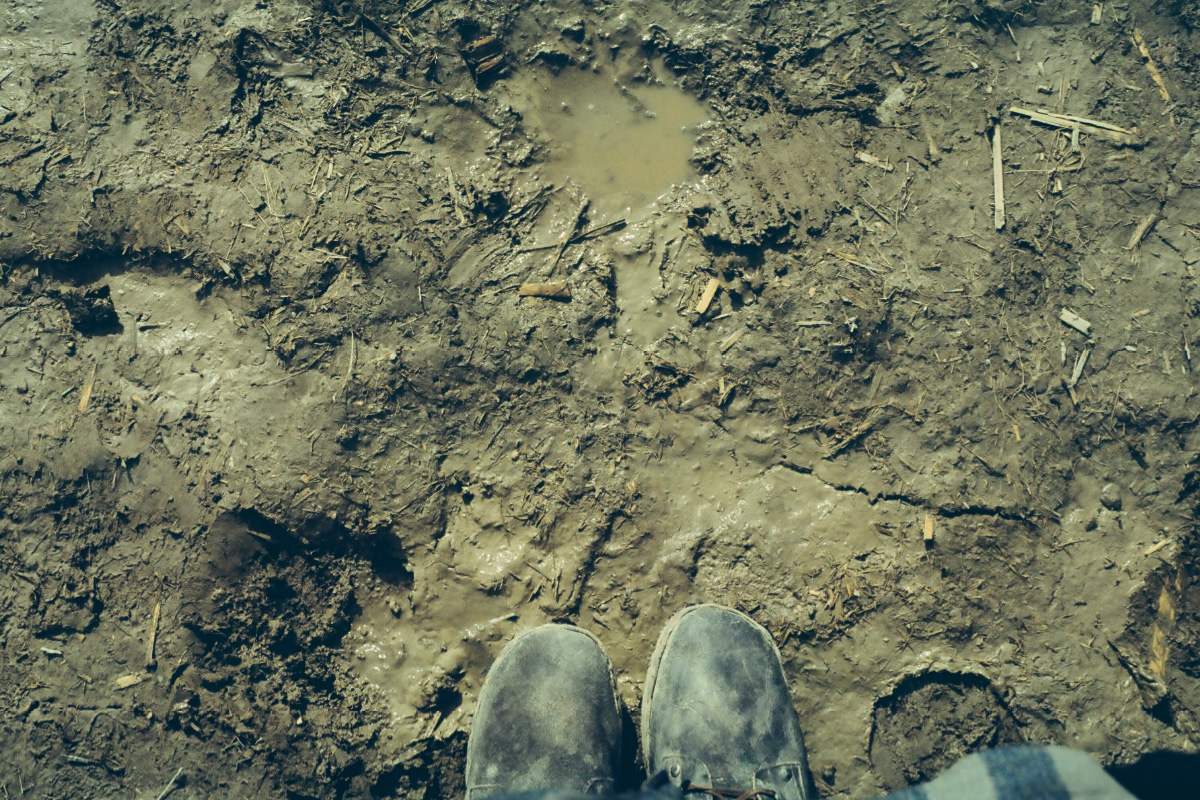
Any future projects you have coming up?
I want to make a short film that’s set at a bris and the main character is — I’d be playing her — a cannibal who’s trying to be a vegetarian. And she meets someone that she went to school with, some family friend, who’s now hot and queer. And they both end up eating the foreskin together in this very weird scene. So more Jewish cannibal stuff.
